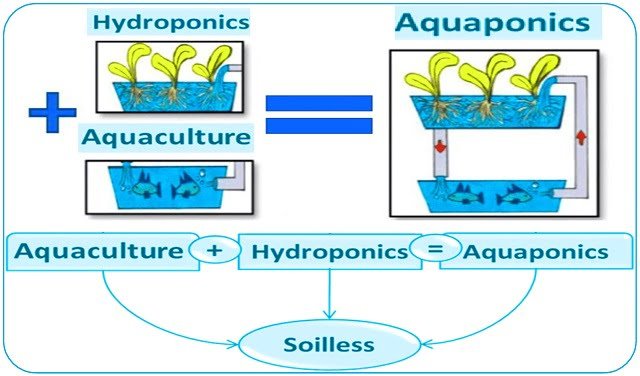In recent decades, the trade of ornamental fish has significantly increased, mainly due to the growth of demand in developed countries.
A large percentage of ornamental fish still rely on fisheries, which generate severe impacts on natural and environmental resources. In this sense, there is a need to improve the cultivation of ornamental fish.
The use of microbial feed additives such as probiotics, prebiotics, and symbiotics can help improve the immune system and growth, as well as enhance reproductive performance in species that reproduce in captivity.
Researchers from Gorgan University of Agricultural Sciences and Natural Resources, Polytechnic University of Marche, Pachaiyappa’s College for Men, Nehru Memorial College, UiT The Arctic University of Norway, and Chiang Mai University published a scientific review on ornamental fish diseases, along with measures to prevent or treat them.
The study also discusses the roles of different natural and sustainable microbial feed additives, particularly probiotics, prebiotics, and symbiotics, on the health, stress reduction during transport, growth, and reproduction of ornamental fish during cultivation.
Health of ornamental fish
The study describes the most isolated parasites, bacteria, viruses, and fungi from ornamental fish.
Currently, there is a trend to use probiotics in aquaculture to reduce the use of antibiotics. Among the most commonly used probiotics are lactic acid bacteria (LAB) and Bacillus; however, Aeromonas, Alteromonas, Arthrobacter, Bifidobacterium, Clostridium, Paenibacillus, Phaeobacter, Pseudoalteromonas, Pseudomonas, Rhodosporidium, Roseobacter, Streptomyces, Vibrio, microalgae (Tetraselmis), and yeast (Debaryomyces, Phaffia, and Saccharomyces) are also beneficial.
Researchers report the use of probiotics to prevent diseases in bettas, platies, goldfish, mollies, zebrafish, clownfish, barbs, tetras, angelfish, Oscar fish, guppies, among other ornamental fish.
Stay Always Informed
Join our communities to instantly receive the most important news, reports, and analysis from the aquaculture industry.
Effects on the growth of ornamental fish
Probiotics have a great effect on the growth, health, and well-being of fish. In aquaculture, research with diets containing probiotics has demonstrated the role of these organisms in improving the balance of microbiota in the intestine.
Likewise, probiotics can increase nutrient assimilation, assimilation capacity, food conversion rate, and improve digestibility.
Finally, probiotics can improve food absorption through the production of extracellular digestive enzymes, resulting in better fish growth.
Effects on the reproduction of ornamental fish
The beneficial effect of probiotics on reproduction has been demonstrated thanks to their ability to produce vitamin B and certain unknown stimulants, which in turn play a vital role in increasing the host’s reproduction rate.
An example is represented by B. subtilis, which is capable of synthesizing vitamins B1 and B12, responsible for reducing the number of abnormal larvae and mortality.
Researchers report a study where they evaluated the effects of supplementing the diet with B. subtilis for a year in five species of ornamental fish: Cirrhinus mrigala, P. reticulata, P. sphenops, X. helleri, and X. maculatus, and the results obtained highlighted better reproductive performance, as well as an increase in the gonadosomatic index, fecundity, and fertility in all species.
Effects on water quality
The administration of probiotics in the culture water can offer an advantage. This is especially important, particularly during larval stages, where their use can improve health conditions.
Research suggests that probiotics (B. acidophilus, B. Subtilis, B. licheniformis, Nitrobacter sp., Aerobacter sp., and S. cerevisiae) have beneficial effects on water quality by increasing the breakdown of organic matter, reducing pathogenic bacteria, among others.
Use of prebiotics and symbiotics in ornamental fish
Prebiotics are promising immunostimulants that have been introduced in aquaculture as a preventive action.
Many prebiotic compounds such as fructooligosaccharide (FOS), galactooligosaccharide (GOS), mannan-oligosaccharide (MOS), inulin, or β-glucan have been used in the ornamental fish farming industry; however, they have also been employed as immunostimulants to improve growth performance, modulate microbial activities of the digestive tract, stimulate the immune system, and increase resistance to stress.
Perspectives
Despite the extensive research conducted to increase disease resistance in cultured fish using probiotics, prebiotics, and symbiotics in the diet, a limited number of studies have been conducted on ornamental fish.
In the near future, the application of prebiotics and symbiotics will be essential for the development of sustainable production of ornamental fish. However, it is still necessary to understand the mechanisms of action of pre-, pro-, and symbiotics on both gastrointestinal health and animal welfare.
Reference (open access)
Hoseinifar, Seyed Hossein, Francesca Maradonna, Mehwish Faheem, Ramasamy Harikrishnan, Gunapathy Devi, Einar Ringø, Hien Van Doan, Ghasem Ashouri, Giorgia Gioacchini, and Oliana Carnevali. 2023. “Sustainable Ornamental Fish Aquaculture: The Implication of Microbial Feed Additives” Animals 13, no. 10: 1583. https://doi.org/10.3390/ani13101583
Editor at the digital magazine AquaHoy. He holds a degree in Aquaculture Biology from the National University of Santa (UNS) and a Master’s degree in Science and Innovation Management from the Polytechnic University of Valencia, with postgraduate diplomas in Business Innovation and Innovation Management. He possesses extensive experience in the aquaculture and fisheries sector, having led the Fisheries Innovation Unit of the National Program for Innovation in Fisheries and Aquaculture (PNIPA). He has served as a senior consultant in technology watch, an innovation project formulator and advisor, and a lecturer at UNS. He is a member of the Peruvian College of Biologists and was recognized by the World Aquaculture Society (WAS) in 2016 for his contribution to aquaculture.




